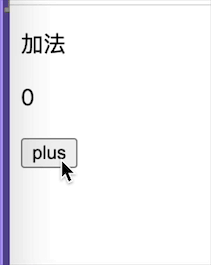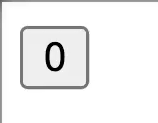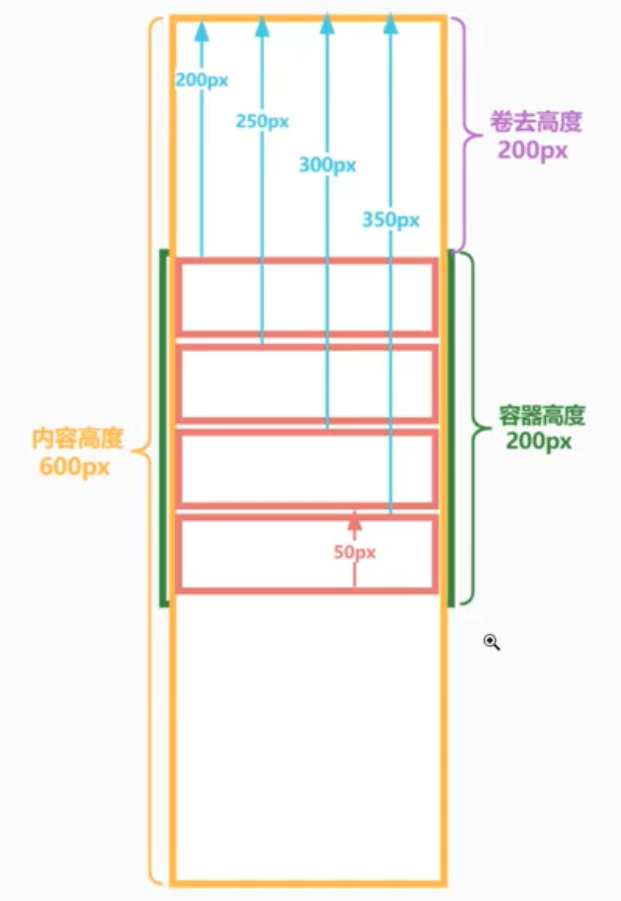介绍原始写法 & 及其改进写法一还有比较流行的 styled-components在RN中的使用 & 及其改进写法二
1.原写法
/**
* 原写法
*/
const styles1 = StyleSheet.create({
item1:{
width:100,height:200,backgroundColor:'#66CCFF',},item2:{
width:100,item3:{
width:50,height:100,top:50,left:25,}
});
console.log('styles1 :',styles1);
原写法的缺点在于变量不好引入,不好体现样式间的关系,没有计算表达式等……
<!--more-->
2.改进写法一
看StyleSheet.create的代码,就是直接返回一个对象
//在react native 0.44版本中
var StyleSheet = {
create: function(styles) {
return styles;
},
那就可以不限于StyleSheet.create的写法,可以比较自由的返回一个对象了,下面给出一个我的简单例子:
/**
* 换一种写法,简单引入了变量表达式
* 虽然还是没有像iOS中 view.center / autolayout之类的写法方便
* @returns {{}}
*/
function styles2Creator() {
let s = {};
let itemWidth = 100;
let itemHeight = 200;
//引用常量
s.item1 = {
width:itemWidth,height:itemHeight,};
//引用其他样式的值
s.item2 = {
width:s.item1.width,backgroundColor:`${s.item1.backgroundColor}`,};
//计算表达式
s.item3 = {
width: s.item2.width / 2,height: s.item2.height / 2,top:s.item2.height / 4,left:s.item2.width / 4,backgroundColor:s.item1.backgroundColor,};
//样式的继承
s.item4 = {
...s.item3,backgroundColor:'#FF00CC',};
//带参数
s.item5 = (top) => {
return {
...s.item3,marginTop:top,};
};
//带参数 + 缺省值
s.item6 = (top) => {
return {
...s.item3,marginTop:top ? top : 10,};
}
return s;
}
const style2 = styles2Creator();
//const style2 = StyleSheet.create(styles2Creator());
console.log('style2 :',style2);
运行一下可以看到 log出来的style2和style1的属性。
3. styled-components
号称React 中的 CSS 最佳实践,使用行内样式,支持CSS。该第三方也也可用于RN。
react-native init了个RN工程 写了个简单的例子:
import React,{Component} from 'react';
import {
AppRegistry,StyleSheet,Text,View,Image
} from 'react-native';
//需要 `npm install --save styled-components`
import styled from "styled-components/native";
//这里开始styled-components 式的样式:
//styled-components的格式为: const [自定义变量名] = styled.[相应的系统组件]`css表达式`;
//普通写法 (不大写开头会报错……
const ListContainerView = styled.View`
width:360;
height:280;
background-color: #F0F2F5;
`;
//扩展 (backgroundColor 和 background-color都可以
const ItemContainerView = ListContainerView.extend`
backgroundColor: #66CCFF;
flexDirection:row;
`;
//带参数
const LeftimageContainerView = styled.View`
height:${props => props.primary ? 280 : 180};;
width:180;
background-color: #77BB00;
`;
//然后发现一个尴尬的事就是不知道怎么扩展自定义组件 比如jdimage
//带计算表达式
const LeftimageHeight = 280 - 10 *2;
const Leftimage = styled.Image`
margin-top:10;
margin-left:10;
width:${180 - 10 *2};
height:${LeftimageHeight};
background-color: #FFFFFF;
`;
//想要获取另一个组件样式Leftimage的高度 不能直接使用 ${Leftimage.height}
//因为 Leftimage返回的是 ƒ StylednativeComponent()方法……
const RightContainerView = styled.View`
width:160;
height:${LeftimageHeight};
background-color: #FF00CC;
`;
export default class MyApp extends Component {
render() {
return (
<ItemContainerView >
<LeftimageContainerView primary>
{console.log('LeftimageContainerView.style:',LeftimageContainerView)}
<Leftimage source={{uri:'http://static.runoob.com/images/demo/demo2.jpg'}}/>
</LeftimageContainerView>
<RightContainerView></RightContainerView>
</ItemContainerView>
);
}
}
AppRegistry.registerComponent('MyApp',() => MyApp);
优点:
- react推荐的行内样式 css in js;
- 方便前端同学的写法 可以完全使用CSS的书写习惯
缺点和原始写法的差不多,还对本身不是前端开发的人来说带来额外的学习成本…… 所以还是不推荐……
参考链接:
- styled-components React 中的 CSS 最佳实践 | zhihu
- styled-components | 官方文档
- Styled Components:让样式也成为组件 | alloyteam.
4.改进写法二
简单来讲 styled-components 就是生成一个带样式的组件,完全可以吸收这种写法 自己改进RN中 ,而不使用styled-components这个库
结合 写法一 和 styled-components的想法,给出一个简单例子:
import React,Image
} from 'react-native';
//写法二
function stylesCreator() {
let s = {};
let width = 360.0,height = 280.0;
s.ListContainerView = {
width: width,height: height,backgroundColor: '#F0F2F5',};
s.ItemContainerView = {
width: width,backgroundColor: '#66CCFF',flexDirection:'row',};
console.log('s.ItemContainerView :',s.ItemContainerView);
s.LeftimageContainerView = {
height:height,width:width / 2,backgroundColor: '#77BB00',};
s.Leftimage = {
marginTop:10,marginLeft:10,width: 180 - 10 *2,height: s.LeftimageContainerView.height - 10*2,backgroundColor: `#FFFFFF`,};
s.RightContainerView = {
width: width / 2,height: s.Leftimage.height,backgroundColor: '#FF00CC',};
return s;
}
const styles = stylesCreator();
//const styles = StyleSheet.create(stylesCreator());
//然后再结合 styled-components:
// 模拟 styled-components API
const styled = (Component,styler) => (props) => {
const style = typeof styler === 'function' ? styler(props) : styler;
return <Component {...props} style={[ style,props.style ]} />
}
// styled components
//同样可以完成组件(带样式)的继承 const RightContainerView = styled(LeftimageContainerView,styles.RightContainerView);
const ListContainerView = styled(View,styles.ListContainerView);
const ItemContainerView = styled(View,styles.ItemContainerView);
const LeftimageContainerView = styled(View,styles.LeftimageContainerView);
const Leftimage = styled(Image,styles.Leftimage);
const RightContainerView = styled(View,styles.RightContainerView);
export default class MyApp extends Component {
render() {
return (
<ItemContainerView >
<LeftimageContainerView primary>
{console.log('LeftimageContainerView.style:',() => MyApp);
emmm ,无需引入第三方库 感觉好多了。缺点当然是不支持原CSS写法。
5. react native 0.45
在0.45版本中运行改进写法一时,你可能看到style2在控制台的输出类似为:
//const style2 = StyleSheet.create(styles2Creator());
style2 :
{item1: 12,item2: 13,item3: 14,item4: 15,item5: 16,…}
item1:12
item2:13
item3:14
item4:15
item5:16
item6:17
__proto__:Object
这是怎么肥事!我的item对象怎么变成数字了!
别急,在0.45版本后StyleSheet代码有所改变(其实我没看具体哪个小版本改的 _(:зゝ∠)_),StyleSheet.create改成:
//react native : 0.45.1
create<S: Styles>(obj: S): StyleSheet<S> {
const result: StyleSheet<S> = {};
for (var key in obj) {
StyleSheetValidation.validateStyle(key,obj);
result[key] = ReactNativePropRegistry.register(obj[key]);
}
return result;
},
//react native0.45.1 ReactNativePropRegistry.js
var objects = {};
var uniqueID = 1;
var emptyObject = {};
class ReactNativePropRegistry {
static register(object: Object): number {
var id = ++uniqueID;
if (__DEV__) {
Object.freeze(object);
}
objects[id] = object;
return id;
}
//多的就不看了……内容不多各位有兴趣自己看
通过看ReactNativePropRegistry代码,StyleSheet将样式对象储存在objects中,并返回uniqueID
比如取回原来的item,就可以这样做:
import ReactNativePropRegistry from '../node_modules/react-native/Libraries/Renderer/src/renderers/native/ReactNativePropRegistry';
console.log("ReactNativePropRegistry.getByID(12): ",ReactNativePropRegistry.getByID(12));
console.log("ReactNativePropRegistry.getByID(style2. item1): ",ReactNativePropRegistry.getByID(style2. item1));
就可以通过 ReactNativePropRegistry.getByID就可以取得样式对象了。这可能对于之前的改进写法造成了一点小麻烦,不过还可以用~
其他参考阅读:
- react-native-css | github css + sass in rn
- rn-less | github css + less in rn
- React-Native 样式管理方案浅谈 | zhihu






